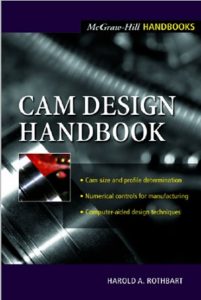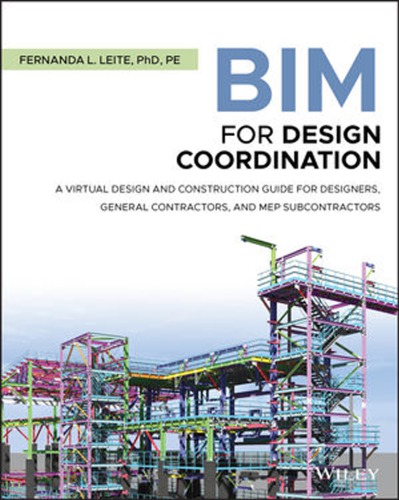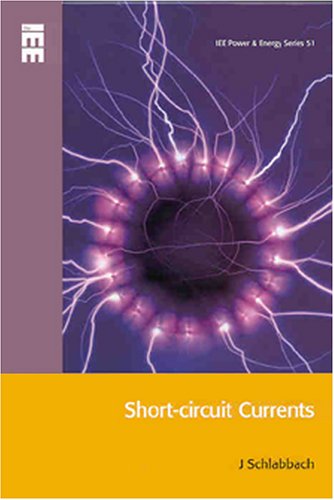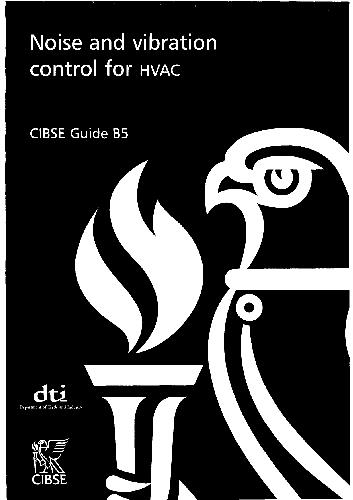Cam Design Handbook by Harold A. Rothbart :: The CAM, used to translate rotary motion into linear motion, is an integral part of many classes of machines, such as printing presses, textile machinery, gear-cutting machines, and screw machines. Emphasizing computer-aided design and manufacturing techniques, as well as sophisticated numerical control methods, this handbook allows engineers and technicians to utilize cutting edge design tools. It will decrease time spent on the drawing board and increase productivity and machine accuracy.
* Cam design, manufacture, and dynamics of cams
* The latest computer-aided design and manufacturing techniques
* New cam mechanisms including robotic and prosthetic applications
A cam is a versatile, specially shaped part of a machine that is always in contact with a member called the follower. The name cam should not be confused with the common abbreviation cam for camera or camcorder, both used in the fields of photography and video, nor with the acronym CAM applied to computer-aided manufacturing, which utilizes computational facilities for machinery fabrication of all kinds. The book is written for the designer concerned with creating or inventing a physical or mathematical function, a motion or an action, a mechanism or a machine. It would be valuable to the mechanical engineer, electrical engineer, physicist, and scientist aimed at developing cam-follower systems of all kinds, sizes, and speeds.
In addition, shop machinists and toolmakers who make and assemble the machinery will find this book of value in their work. Automobile and racing car enthusiasts should find this book helpful in their aspirations. Last, the book can be an aid to students in engineering by introducing theoretical and practical applications of multifaceted ingenious mechanisms and machinery.
Cam design is constantly evolving. New techniques and information are available for cam synthesis, analysis, dynamics, and performance and the production of the actual cam body itself. The most significant advancement of cam systems has resulted from the application of the digital computer. Computer-aided design (CAD) and computer-aided manufacturing (CAM) have been invaluably applied as software tools. CAD design is downloaded to CAM in discrete increments by computer numerical control (CNC) for actual cam production. The content of the handbook may be considered in the following categories:
• Cam curves: basic trigonometric, modified or blended from basic curves, polynomial curves, Fourier series curves, and spline functions
• Cam profile geometry, consisting of pressure angle, curvature, and profile analysis
• Cam hardware, including materials, lubrication, and manufacturing
• Cam system dynamics, containing the elastic follower and drive systems, vibratory analysis, and response This book is for use in the following fields of application: Industrial and commercial machinery, as a critical part of production equipment for goods and services, for example, shoe making, steel mill equipment, and paper printing presses
• Automotive performance and optimization, as a high-speed automotive valve operating system
• Cams in microelectromechanical systems (MEMS), for micromachinery in miniature control systems
• Cams as analog computers
• Gadgets, mechnisms, and machinery, as inventive, ingenious devices Furthermore, this book contains the latest, most important techniques and test data available.
The philosophy of the book is to present diversified applications for cams to aid the reader’s understanding and design selection. This volume also contains many new examples, a listing of computer software, and an extensive list of references. It should be noted that cams, gearing, rolling-element bearings, and traction (friction) drives are of the same basic mechanical family, the study of which is generically referred to as contact mechanics. These devices have in common rolling and/or sliding action coupled with reasonably high concentrated contact (Hertz) stresses. In the field of contact mechanics the failure mechanisms among these machine elements are similar and are related to material metallurgy and heat treatment, lubricant rheology and chemistry, surface topography and geometry, and applied contact load (stress).
These machine components also have commonly related manufacturing requirements. Hence, they share a similar manufacturing technology and engineering analysis. The significance of cam profile accuracy is emphasized. A surface may appear smooth to the eye and yet have poor dynamic properties. Depending on the application and loads the cam profile accuracy and its surface finish may affect the life, vibration, and noise of a cam-follower system.










![[PDF] Draw Buildings and Cities in 15 Minutes Draw Buildings and Cities in 15 Minutes pdf](https://www.freepdfbook.com/wp-content/uploads/2021/06/Draw-Buildings-and-Cities-in-15-Minutes-218x150.jpg)








![[PDF] Digital Image Processing An Algorithmic Introduction Using Java Digital Image Processing An Algorithmic Introduction Using Java](https://www.freepdfbook.com/wp-content/uploads/2022/06/Digital-Image-Processing-An-Algorithmic-Introduction-Using-Java.jpg)




![[PDF] 43 Years JEE ADVANCED + JEE MAIN Chapterwise & Topicwise Solved Papers 43 Years JEE ADVANCED (1978-2020) + JEE MAIN Chapterwise & Topicwise Solved Papers Physics PDF](https://www.freepdfbook.com/wp-content/uploads/2022/03/43-Years-JEE-ADVANCED-1978-2020.jpg)

![[PDF] Problems in Physical Chemistry for JEE (Main & Advanced) Problems in Physical Chemistry for JEE (Main & Advanced) Free PDF Book Download](https://www.freepdfbook.com/wp-content/uploads/2022/03/Problems-in-Physical-Chemistry-for-JEE-Main-Advanced.jpg)
![[PDF] Engineering Physics (McGraw Hill)](https://www.freepdfbook.com/wp-content/uploads/2021/05/bafc8c2685bb6823a9c56134f7fba5df.jpeg)

![[PDF] Engineering Chemistry By Shashi Chawla](https://www.freepdfbook.com/wp-content/uploads/2022/05/Theory-And-Practicals-of-Engineering-Chemistry-By-Shashi-Chawla-free-pdf-book.jpeg)
![[PDF] Chemistry: An Introduction to Organic, Inorganic & Physical Chemistry Chemistry: An Introduction to Organic, Inorganic & Physical Chemistry](https://www.freepdfbook.com/wp-content/uploads/2022/04/Chemistry-An-Introduction-to-Organic-Inorganic-Physical-Chemistry.jpg)
![[PDF] Essentials of Physical Chemistry Essentials of Physical Chemistry Free PDF Book by Bahl](https://www.freepdfbook.com/wp-content/uploads/2022/04/Essentials-of-Physical-Chemistry-bahl.jpg)
![[PDF] Biological control of plant-parasitic nematodes: soil ecosystem management in sustainable agriculture Biological control of plant-parasitic nematodes: soil ecosystem management in sustainable agriculture](https://www.freepdfbook.com/wp-content/uploads/2022/05/Biological-control-of-plant-parasitic-nematodes-soil-ecosystem-management-in-sustainable-agriculture.jpg)
![[PDF] Human Anatomy: Color Atlas and Textbook Human Anatomy: Color Atlas and Textbook Free PDF Book](https://www.freepdfbook.com/wp-content/uploads/2022/05/Human-Anatomy-Color-Atlas-and-Textbook.jpg)
![[PDF] Concepts of Biology Book [Free Download]](https://www.freepdfbook.com/wp-content/uploads/2022/05/Concepts-of-Biology.jpg)
![[PDF] Essentials of Biology [Free Download] Essentials of Biology Free PDF BOok Download](https://www.freepdfbook.com/wp-content/uploads/2022/05/Essentials-of-Biology-Free-PDF-Book-Downlaod.jpg)
![[PDF] Human Biology Book [Free Download]](https://www.freepdfbook.com/wp-content/uploads/2022/05/PDF-Human-Biology-Book-Free-Download.jpg)


